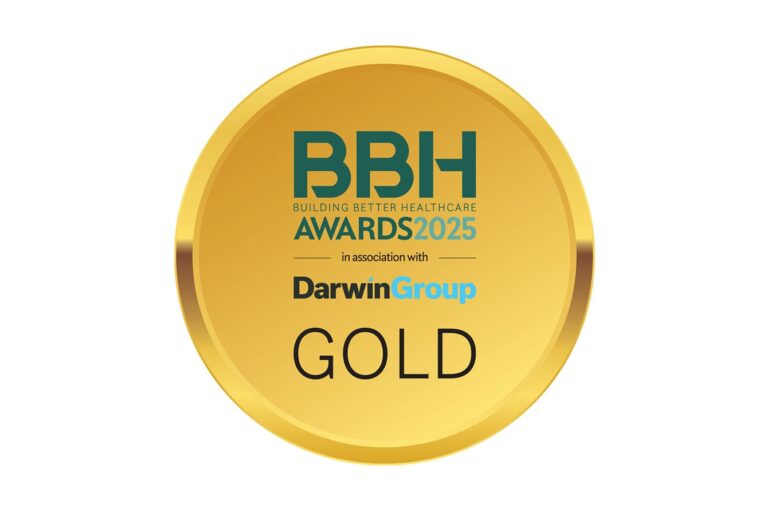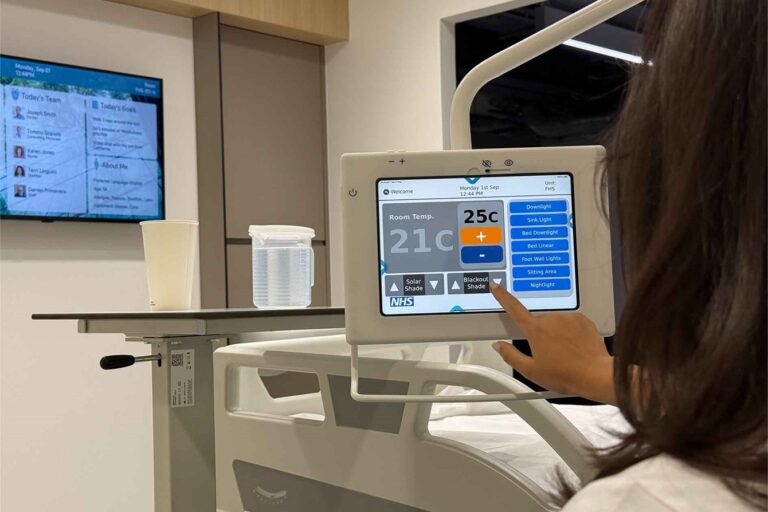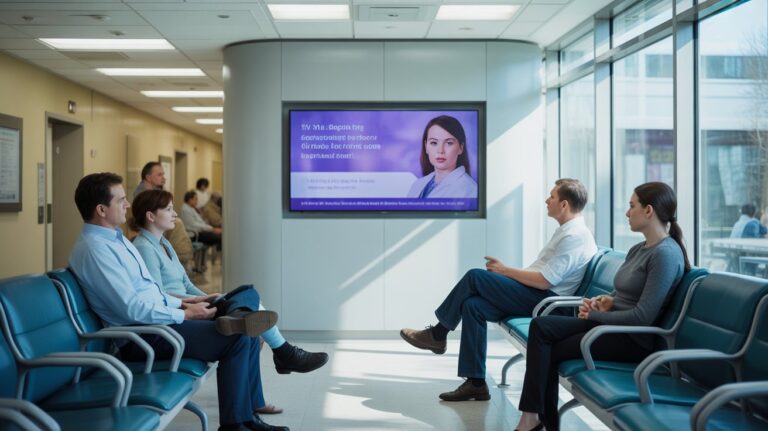It’s just a telly on the wall, right?

As patient entertainment systems become more complicated, so too does their design and deployment. Today’s feature rich, IoT driven technology is changing the parameters of the industry’s project management function.
We speak with Project Manager and long-time Hotel TV logistics expert, Tom Chapman, and talk about Airwave Healthcare’s project management machine.
Tell us about your role
I’m one of several project managers within Airwave’s operations team and work on our multi-layered, integrated system projects. Essentially, I act as an intermediary between the sales team, technical department and the client, ensuring we’re all communicating and working as efficiently and cost-effectively as possible.
I know I don’t look old enough but I’ve been performing similar roles in the industry for nearly 21-years!
How has the healthcare technology industry changed from a project management perspective?
The complexity and scope of today’s display technology is a world apart from what it used to be. When I first started in the industry, the challenges were fairly straightforward. We’d ensure the aerial and satellite to TV network was implemented and all available channels were available, we’d ensure that each TV was cloned (healthcare TVs can be “cloned” to expedite one TV’s settings across every TV) and we’d either trolley or wall-mount each screen. The only added complexity arose from VOD (video on demand), but this was very much a premium property domain.
Now of course, things are very different. Complexity arises not only from advancing technology, but the integration of systems with various third-party suppliers and partners – for example the hospital’s WIFI & network provider (if not managed by Airwave). Is this robust enough to support our system? Is the provider available, or willing, to talk to our technicians if available? A third party introduces an added dimension to a project which needs to be managed carefully.
We also need to be cognisant of the complexities that IoT solutions bring; whilst IoT delivers innovation and infinite possibilities, it can also be temperamental! We need to be proactive and alert.
Talk us through the workflow of a typical project
This actually starts before I take ownership; we’ll typically engage our pre-sales team to implement a full site-survey, the nature of which is dependent on the scope of the project. Most Airwave engineers are multi-disciplined and able to cover all aspects of the survey, but it’s not unusual to send engineers with various skillsets to advise on large, multi-faceted jobs. As an example, an RF engineer to review the hotel’s RF distribution, whilst a network specialist concurrently surveys WIFI/LAN/IP infrastructure.
This analysis details the scope and complexity of the project, allowing me to work alongside the account manager and technical team to present a “good, better, best” proposal to the customer. All being well, we’ll kick off the project and the real work begins!
This commences with a series of conversations between the sales and technical team -these interactions are critical to the smooth running of the project and we’ll speak at great length, covering off all areas and contingencies in micro-detail.
From this point forward, I am in constant contact with the lead technical engineer, it can be a little intense and often morphs into something like a husband and wife relationship!
Next, a site meeting with the client. This covers the job’s logistics: all project stakeholder introductions, off-site preparation and stock lead times, proof of concept rooms, access and delivery, floor plans, elevations and design team input – the list is long.
I insist on visiting every room in the property to look for potential challenges – this might seem excessive but you’d be surprised at the number of issues that can be mitigated by doing this. I’ll take a virtual clipboard and review power, data and RF outlets, check the area and structural integrity of wall surfaces designated for install – and I count rooms! Believe it or not, it’s not uncommon for a facilities manager to misquote, or not know, the number and layout of rooms in their property.
While on site, the lead technical engineer and I will also then run through the initial RF/Network survey report and sense check all items related to the deployment of the system.
When this is complete, we’ll finalise the order and commence all pre-site works. From supplier confirmations, to the scheduling of engineer resource, through to the pre-configuration and design of the system for the end user, this part of the process sees me knee-deep in topography drawings and spreadsheets and it’s all about the detail. For example, we need to ensure that equipment is set up and labelled to its respective property location, harvesting specific details (serial, MAC address etc) to each piece of hardware.
This not only helps with an efficient installation, but is integral to the support of the products once handed over and in a live environment.
As good practice, I will typically attend site on the first installation day, but theoretically speaking, if I’ve done my job and been ultra-efficient, I don’t really need to be involved now.
Once the work is complete and the system commissioned, I will collate installation and technical handover reports and organise training for the relevant staff.
With the final sign off, O&M and trouble-shooting documentation is presented to all stakeholders, these files provide reference for both the client and our own support team.
When all this done, it’s time for a celebratory cup of tea (gin) and a jammy dodger…before moving onto the next deadline!
Is there much variation from project to project?
There is! And this is what makes the job so interesting. I have worked on integrated systems deployed over several thousand rooms, but have also managed the supply and installation of a basic Freeview system into a small, independent care home.
However, every single site is different. Even if we’re installing the same system into a template room, our hospitality partner Premier Inn for example, there are always nuances and surprises.
I love this part of the job, it keeps me on my toes and stops me getting complacent and making mistakes.
I often hear that you learn from mistakes and shouldn’t be afraid to make them. Well, our management team think differently! Mistakes can be expensive when working with technology so we’re trained to avoid mistakes at all costs.
What’s the biggest challenge you face on a day-to-day basis?
Evolving technology. The systems we sell are constantly changing. Whilst this is exciting and dynamic, it can be quite exhausting. Whilst we don’t have to know every little detail about each system we sell, we do need to know a considerable amount. Toby Hart (Airwave Operations Director) insists that we are product experts.
This means that there’s never really a quiet day, if we’re not pouring over spreadsheets, we’re expected to be learning the complexities of Samsung commercial TVs or burying our head in WiFi theory!
What’s your top tip?
I have two. Firstly, be honest, it’s such an important quality and should underpin your relationship with the client. Be open, be transparent, if you have bad news, don’t hide it or dress it up.
Similarly, don’t be afraid to challenge the customer if you feel their expectations are unrealistic or have concerns about the technology they’re requesting. We’ve often recommended against unnecessary features – the customer usually appreciates this as it keeps costs down! – and often express concerns about systems that lack scope to be future-proofed.
Secondly, every good project manager should be obsessed about working as cost-efficiently as possible. This might seem obvious but you’d be surprised how often it’s not the case. A lean project means better prices for the customer and better margins for Airwave. Everybody’s happy.
What’s the best part of the job?
I love technology and learning about products. As mentioned, I don’t have comprehensive knowledge of every product so often see projects as a jigsaw puzzle. At first, you look at the scope of works and it seems overwhelming. Where do I start?! but gradually, the pieces come together, concluding with an enormous sense of satisfaction when the puzzle is complete.
I see our technology – interactive TV platforms, signage, WiFI, MDM etc – as pieces of the puzzle. When these are all integrated effectively and function as per design, it’s a great feeling.
What makes you tick?
This might sound a bit corny but I get such a buzz from delivering a well-planned and well-executed project. I love my job and am passionate about getting it right. We have such high standards at Airwave and it’s humbling to be part of such a talented team.
Couple this, with getting the chance to visit some incredible properties and working with highly motivated and invested clients, is a great part of doing my job.
I do love a bad joke, a biscuit and am great friends with Airwave’s Head of Hospitality Sales, Wayne Bowring, who keeps me in check with his sardonic wit and straight-talking ways.



